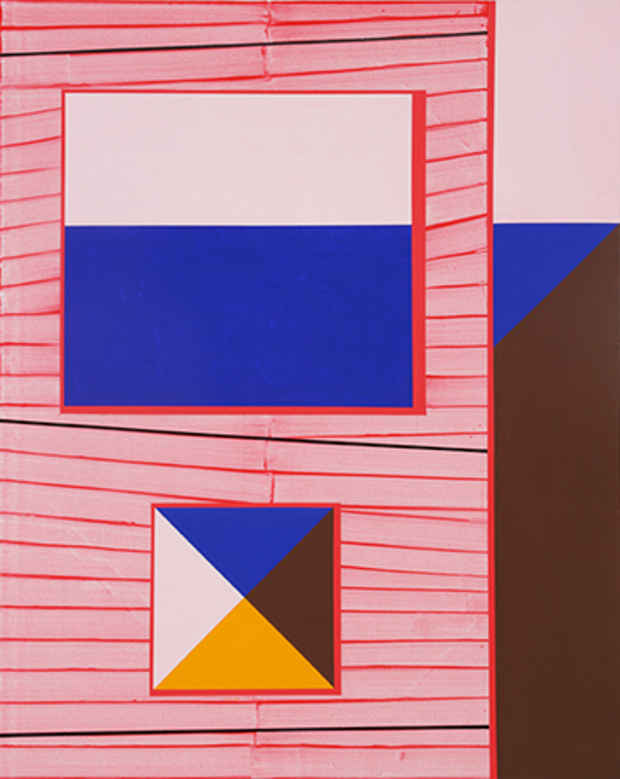“E.1027” Exhibition
Joe Sheftel Gallery

[Image: Gary Stephan "E-1027" (2014) Acrylic on canvas 60 x 48 in.]
This event has ended.
Joe Sheftel Gallery presents E.1027, a group exhibition of work considering Eileen Gray’s modernist villa E.1027.
In 1926, Irish-born designer Eileen Gray, with the assistance of Jean Badovici, a Paris-based architect and critic, began construction on a summer home on the French Riveria. Called E.1027, the house was to cement the couple’s relationship, with an architecture that responded to the site’s natural beauty with clean lines and simplicity, creating generous vistas over the sea at its isolated location in Roquebrune-Cap-Martin.
As a pioneer of Modernist architecture, Gray had become close with Le Corbusier. While she shared many ideas with the young Swiss-born architect, she disagreed with him on one of his fundamental conceits: that a house is a “machine for living.” Instead Gray believed that “[a house] is the shell of man — his extension, his release, his spiritual emanation. It is not a matter of simply constructing beautiful ensembles of lines,” adding, “formulas are nothing!” E.1027 was Gray’s built proof that a house is, in her words, “above all, a dwelling for people.”
Throughout the 1920’s and 30’s Le Corbusier was a frequent visitor at E.1027 and he remained friendly with its owners even after Gray and Badovici split in 1932. But it is said that he also harbored strong feelings of professional jealousy towards the thoughtful structure the couple had built for themselves, of its effortless simplicity, and of the way it so sensitively inserted itself in the landscape.
In 1938, while visiting, Le Corbusier decided to grace E.1027’s pristine white walls with large-size murals, many of them depicting graphic sexual content. Photographs of that time show the architect painting them entirely in the nude. It is unknown whether this was an act of admiration for the site or simply of paintbrush-centric male hubris. Gray was reportedly dismayed by what she regarded as a desecration of the space she had built for herself and Badovici. Perhaps, as many critics suspect, it was his deliberate act of violence directed at her architectural legacy.
Eileen Gray and Le Corbusier epitomize two diametrically opposed concepts of architecture and space. While both practices hinge on simplicity and purity, the latter’s radical ideas of architectural efficiency would later, throughout the 20th century, lead to many ill-conceived housing projects the world over. The former’s more sensitive approach— responding to the needs of people, to that of nature, to the site, and to love— is the one that quietly but ultimately prevails.
E.1027 at Joe Sheftel includes artists Graham Collins, Denise Kupferschmidt, Sofia Leiby, Mike Pratt, Gary Stephan and Lily Stockman.
Stephan and Stockman respond directly to E.1027, with Stephan depicting Gray’s house and its walls and Stockman looking at the flora and motifs present at the site. Pratt uses materials that are reminiscent of this architecture and location. More generally, Leiby explores objective versus subjective line-making, counter-posing the formal constraints of cursive letter stamps against those of handwriting samples. Collins repurposes found landscape paintings, to sew new subject matter out of old paintings and Kupferschmidt reacts to the body and its spiritual emanations.
Media
Schedule
from July 09, 2015 to August 05, 2015
Opening Reception on 2015-07-09 from 18:00 to 20:00